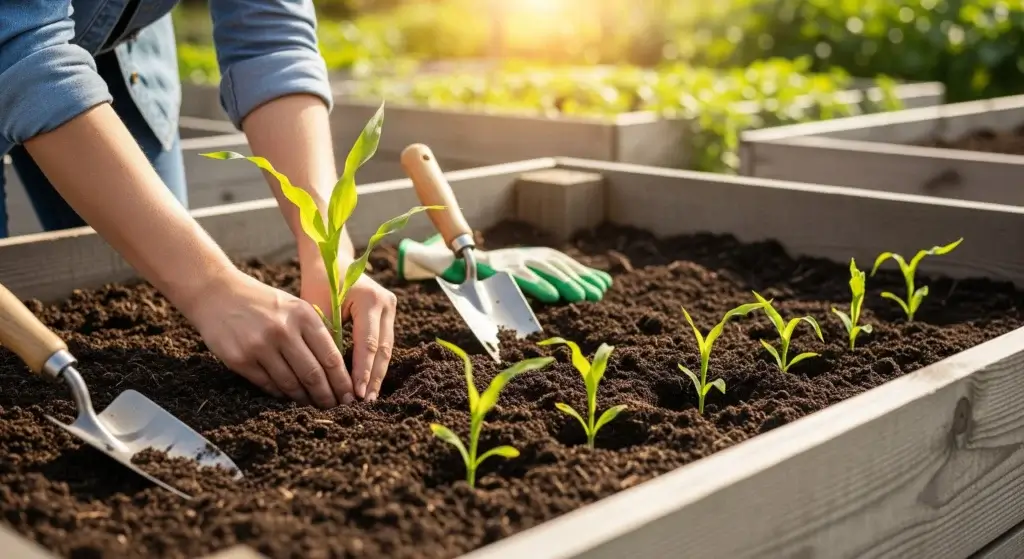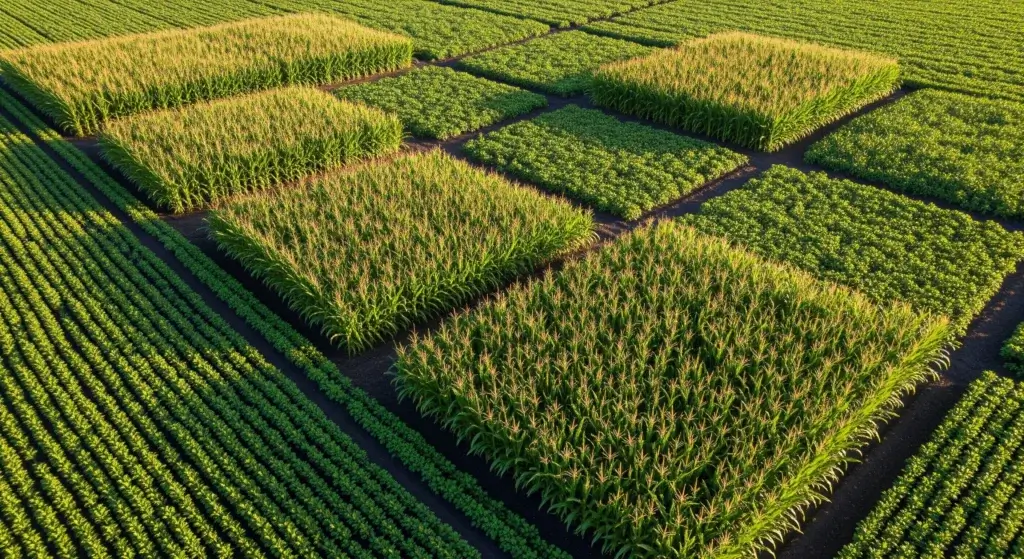
Cordyline Red Sister, with its vibrant, burgundy-red leaves, is a stunning addition to any garden or indoor space.
This tropical plant is relatively low-maintenance, but to ensure it thrives, it’s essential to understand its specific care requirements.
In this comprehensive guide, we’ll explore the common problems of Cordyline Red Sister, how to take care of it, propagation methods, potential pests and diseases, and whether the plant is toxic.
Let’s dive in and learn how to grow and care for this beautiful plant.
Benefits of growing cordyline red sister
Growing Cordyline Red Sister, also known as Terminalis Ti, offers several benefits for both gardeners and indoor plant enthusiasts.
Here are some of the advantages of growing this stunning plant:
- Read also: Cultivating Color: A Guide to Growing Croton Mammy
- Read also: A Guide on How To Grow Cypress Trees
Architectural beauty
The Cordyline Red Sister boasts a striking and exotic aesthetic, with either a single trunk or multiple stems adorned by dense tufts of long, narrow, leathery leaves.
Its versatility allows it to stand out as a specimen plant in lawns or borders, creating a bold and impactful visual statement with its strong vertical shape.
Low-maintenance
This plant is a testament to simplicity, being easy to grow, and displaying resilience against drought.
Its adaptability to various soil types and minimal care requirements make it an ideal choice for those seeking a low-fuss, yet visually stunning addition to their garden or indoor space.
Air purification
Similar to many plants, the Cordyline Red Sister contributes to indoor air quality by absorbing toxins and eliminating harmful chemicals.
Its air-purifying capabilities make it a valuable asset indoors, promoting cleaner air and potentially reducing stress levels.
Mood enhancement
Spending time surrounded by plants, including the vibrant Cordyline Red Sister, has been linked to mood enhancement, increased productivity, heightened concentration, and enhanced creativity.
The plant’s vivid colors and graceful growth pattern introduce a touch of tranquility to any environment.
Pest and disease resistance
The Cordyline Red Sister typically exhibits resistance to pests, minimizing the need for intensive care.
Regular inspections and prompt treatment for any signs of infestation contribute to the plant’s overall health and longevity.
Indoor and outdoor growth
Whether indoors or outdoors, the Cordyline Red Sister proves to be a versatile choice for various garden designs and climates.
Its adaptability allows it to flourish in both settings and when grown outdoors, it can attain an impressive height of up to 8 feet.

Common Problems of Cordyline Red Sister
While the Cordyline Red Sister generally showcases resilience, it is not entirely immune to a few potential issues.
Understanding and addressing these common problems can contribute to the sustained health of your plant.
Let’s explore these challenges in more detail:
Leaf Browning:
Possible causes:
- Underwatering: Inadequate water supply can lead to leaf browning. Ensuring consistent and sufficient watering is crucial.
- Low humidity: Cordyline Red Sister prefers moderate humidity. In dry conditions, especially indoors, leaf browning may occur.
- Direct sunlight exposure: Excessive exposure to direct sunlight, particularly during the hottest part of the day, can contribute to leaf browning.
Root Rot
Causes:
- Overwatering: Excessive water accumulation in the soil can lead to root rot, affecting the plant’s overall health.
Symptoms
- Wilting: Overwatering can cause the roots to rot, leading to wilting and overall plant decline.
- Yellowing leaves: Yellowing of the leaves may be indicative of waterlogged roots.
How do you take care of a Cordyline Red Sister?

Ensuring the optimal care for your Cordyline Red Sister involves a combination of suitable growing conditions, proper watering practices, and timely fertilization.
Here’s a more detailed guide to enhance your understanding of caring for this vibrant plant:
Soil conditions
Cordyline Red Sister thrives in well-draining soil.
This is crucial to prevent waterlogging, which can lead to root-related issues.
Use a quality potting mix that allows excess water to drain freely.
Light requirements
Position your Cordyline Red Sister in an area with bright, indirect light.
While it can tolerate some direct sunlight, prolonged exposure to intense sun rays may lead to leaf browning.
Providing filtered sunlight or partial shade is ideal.
Watering practices
Keep the soil slightly moist, but not overly saturated.
Allow the top inch of soil to dry out between waterings.
This helps prevent issues such as root rot while ensuring adequate hydration for the plant.
Fertilization routine
During the growing season, typically spring through early fall, fertilize your Cordyline Red Sister every two weeks.
Use a balanced liquid fertilizer to provide essential nutrients for robust and healthy growth.
Reduce or discontinue fertilization during the dormant period in winter.
Additional tips
- Temperature considerations: Cordyline Red Sister prefers temperatures between 65°F to 80°F (18°C to 27°C). Protect it from drafts and sudden temperature fluctuations.
- Humidity levels: While adaptable to various humidity levels, maintaining moderate humidity can contribute to the plant’s well-being, especially when grown indoors.
- Pruning: Trim any damaged or dead leaves regularly to promote a tidy appearance and encourage new growth.
- Pest vigilance: Keep an eye out for common pests like spider mites or aphids. Treat promptly if any infestation is detected.

How to propagate cordyline red sister
Propagating your Cordyline Red Sister is a rewarding endeavor, and there are a couple of effective methods to expand your plant collection.
Here’s a more detailed guide on propagating this stunning plant:
Stem cuttings
- Cutting length: Begin by selecting healthy stems for cutting. Aim for lengths around 10–15cm. Ensure each cutting has at least a few leaves attached.
- Potting mix: Use a well-draining potting mix to plant the stem cuttings. This helps prevent waterlogging and encourages healthy root development.
- Planting process: Insert the cut end of each stem cutting into the potting mix. Ensure the nodes (areas where leaves are attached) are beneath the soil surface.
- Optimal environment: Place the potted cuttings in a warm and humid environment. Creating a makeshift greenhouse or using a plastic cover can help maintain the necessary humidity levels.
- Root development: Over time, the cuttings will develop roots. You can gently tug on the base of the plant to check for resistance, indicating successful root growth.
- Transplanting: Once a robust root system has developed, transplant the rooted cuttings into individual pots or desired outdoor locations.
Division
- Offshoot separation: Another propagation method involves dividing the plant. Identify offshoots or side shoots emerging from the main plant.
- Separation process: Gently separate these offshoots from the main plant. Ensure each division has a portion of roots attached.
- Replanting: Plant the separated offshoots in suitable growing conditions. Use well-draining soil and provide proper care to promote their establishment.
Additional Tips
- Timing: Spring and early summer are typically ideal times for propagation, as plants exhibit increased growth during these seasons.
- Rooting hormone (optional): Using rooting hormone on the cut ends of stem cuttings can encourage faster and more robust root development.
- Care for young plants: Newly propagated plants may require a bit of extra care initially. Provide consistent moisture and protection from harsh environmental conditions.
Cordyline Red Sister Plant Pest Or Diseases
Cordyline Red Sister plants are generally hard against pests, yet occasional encounters with spider mites or mealybugs can occur.
To maintain plant health, conduct regular inspections for signs of infestation.
Swiftly address any issues using natural or chemical treatments.
Ensuring proper air circulation and avoiding overwatering are key preventive measures against common fungal diseases.
Keep your Cordyline Red Sister thriving with these simple but effective care practices.

Is The Plant Toxic Or Poisonous?
Cordyline Red Sister is mildly toxic when ingested by pets or humans due to the presence of saponins.
These compounds can lead to gastrointestinal discomfort and irritation.
To ensure safety, keep the plant out of reach of children and pets. In case of ingestion, seek prompt medical attention.
Prioritize a secure environment to enjoy the beauty of Cordyline Red Sister responsibly.
- Read also: How to Lower pH in Soil for a Thriving Garden
- Read also: Different Types of Drip Irrigation Emitters for Efficient Watering
Conclusion
The Cordyline Red Sister stands as a captivating addition that effortlessly introduces a sense of tropical allure to any environment.
Armed with insights into its care essentials, encompassing aspects like watering, lighting, propagation, and pest management, you can foster an environment where your Cordyline Red Sister not only survives but thrives.
Let the vibrant and eye-catching foliage of this striking plant continue to enhance and beautify your indoor or outdoor space.
FAQs
While it prefers bright, indirect light, it can tolerate some direct sunlight, especially in the morning.
Water the plant when the top inch of the soil is dry, typically every 7–10 days, but adjust based on environmental conditions.
This plant thrives in temperatures between 60–85°F (15–29°C) and should be protected from temperatures below 50°F (10°C).
Yes, rainwater is an excellent choice, as it’s free of the chemicals found in tap water and provides the plant with essential nutrients.



